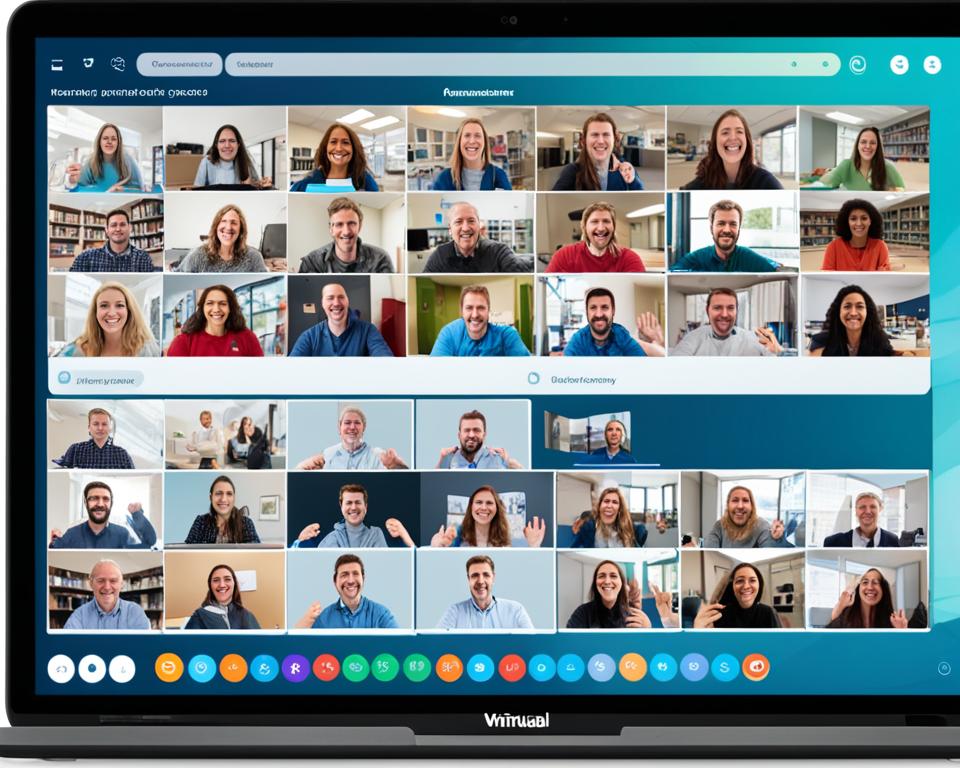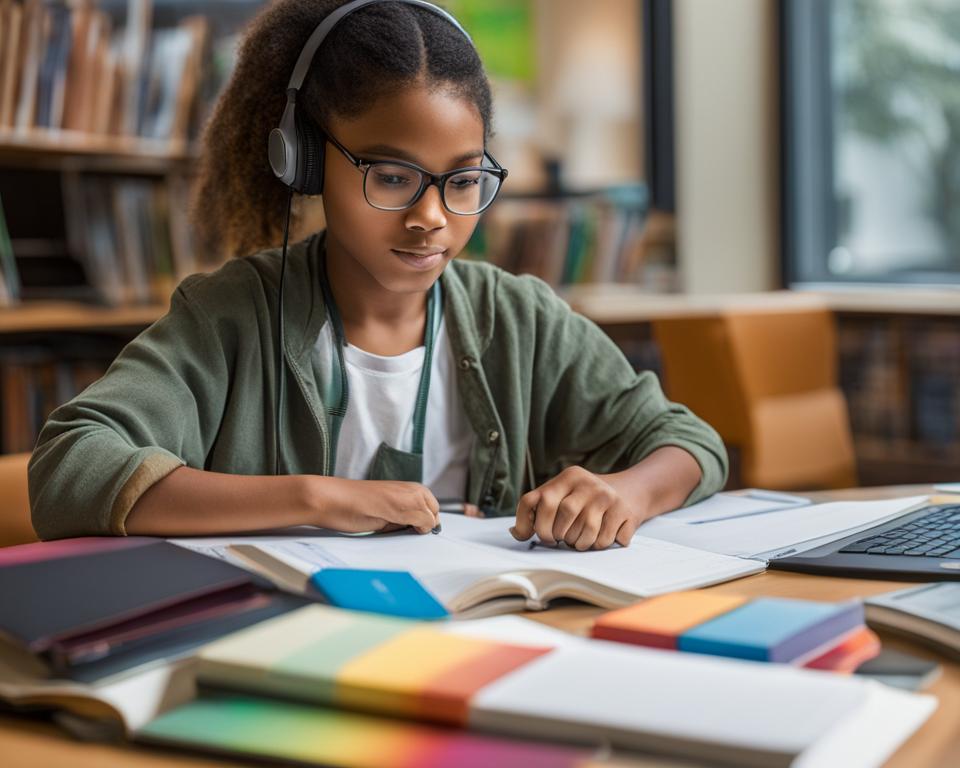In today’s digital age, online learning has become increasingly popular. As more and more students and educators embrace remote education, the demand for interactive virtual classes continues to rise. Whether you are a teacher seeking ways to engage your students or a student looking for a more dynamic online learning experience, interactive virtual classes provide a solution.
Interactive virtual classes offer a unique opportunity to participate in real-time discussions, engage in collaborative activities, and receive immediate feedback from instructors. These classes take advantage of technology to create a virtual classroom that simulates the interactive and engaging nature of traditional in-person classes, allowing students to connect with their peers and instructors from anywhere in the world.
With the advancement of e-learning platforms and the availability of live virtual classes and interactive online courses, the possibilities for engaging and effective online education are endless. By leveraging the features and tools provided by virtual learning platforms, educators can create an immersive and interactive learning environment that fosters critical thinking, creativity, and active participation.
In this article, we will explore various strategies to create engaging online classes, including setting clear expectations, using a variety of activities, providing frequent feedback, incorporating human elements, being flexible and supportive, and rewarding and celebrating progress. By implementing these strategies, both educators and students can benefit from an enriching and interactive virtual classroom experience.
Key Takeaways:
- Interactive virtual classes provide a dynamic and engaging online learning experience.
- Virtual learning platforms offer tools and features to create interactive virtual classrooms.
- Strategies such as setting clear expectations and using a variety of activities enhance engagement in online classes.
- Frequent feedback and incorporating human elements create a sense of connection and support in virtual classrooms.
- Rewarding and celebrating progress motivates students and promotes active participation in online learning.
Set Clear Expectations
Before starting an online class, it is essential to communicate clear expectations to students. This includes sharing learning objectives, course policies, grading criteria, and online etiquette. Providing a syllabus, orientation video, or welcome email can help set the tone for the course and encourage students to ask questions and seek help when needed.
A comprehensive syllabus outlines the course structure, learning outcomes, assignments, due dates, and resources. It provides students with a clear roadmap of what to expect throughout the semester. An orientation video or welcome email can introduce the instructor, explain the course format, and highlight essential information students need to know before the class begins.
By communicating the course’s learning objectives, students gain a clear understanding of what they are expected to achieve and what skills they will develop throughout the course. Clear course policies set expectations regarding attendance, participation, late submissions, and other important aspects of the class.
Grading criteria inform students about how their work will be evaluated and how they can earn grades in the course. This clarity helps students align their efforts to meet specific grading standards.
Online etiquette guidelines establish the expected behavior and communication norms for online discussions, chats, and forums. This fosters a respectful and inclusive learning environment, promoting meaningful interactions and productive collaboration among students.
“Setting clear expectations is vital in online learning. By providing comprehensive documents like syllabi and orientation videos, and introducing course policies, grading criteria, and online etiquette, instructors can establish a strong foundation for student success and engagement.”
| Key Elements for Setting Clear Expectations | Benefits |
|---|---|
| Learning Objectives | Helps students understand what they will achieve and develop throughout the course. |
| Course Policies | Sets expectations regarding attendance, participation, late submissions, and more. |
| Grading Criteria | Provides clarity on how student work will be evaluated and graded. |
| Online Etiquette | Fosters a respectful and inclusive learning environment for online interactions. |
| Syllabus | Outlines the course structure, assignments, due dates, and important resources. |
| Orientation Video | Introduces the instructor and reviews essential information about the course. |
| Welcome Email | Highlights important details and encourages students to reach out for assistance. |
Use a Variety of Activities
Keeping online classes interesting and engaging requires incorporating a diverse range of activities. By utilizing various interactive elements, educators can enhance student participation and facilitate a dynamic virtual learning environment.
Here are some effective strategies to promote engagement in online classes:
- Quizzes: Quizzes are a valuable tool to assess student understanding and encourage active learning. Integrating quizzes throughout the course can help reinforce important concepts and provide immediate feedback to students.
- Polls: Polls allow instructors to gather opinions and perspectives from students. They can be used to spark discussions, gauge comprehension, or gather feedback on course content or teaching methods.
- Games: Incorporating educational games can make learning fun and engaging. Gamified activities can motivate students to actively participate, collaborate, and apply knowledge in a competitive and interactive setting.
- Simulations: Simulations provide a realistic and immersive learning experience. By recreating real-world scenarios, students can apply theoretical knowledge and develop practical skills in a controlled environment.
- Case Studies: Case studies offer opportunities for critical thinking and problem-solving. By analyzing complex real-life situations, students can enhance their understanding, draw connections between theory and practice, and develop decision-making skills.
Additionally, incorporating multimedia elements is an effective way to cater to diverse learning styles and engage students visually and audibly:
- Videos: Videos can be used to deliver lectures, demonstrations, or supplementary content. They provide a dynamic medium to convey information in an engaging and visually appealing format.
- Podcasts: Podcasts offer an alternative way to deliver audio-based content. They can be used for storytelling, interviews, or discussions, allowing students to consume educational material flexibly.
- Blogs: Blogs can serve as platforms for students to reflect on their learning experiences, share insights, and engage in discussions. They provide an interactive and collaborative space for students to showcase their work and connect with peers.
In addition to these activities, leveraging breakout rooms, discussion boards, peer reviews, and group projects can foster interaction, collaboration, and knowledge exchange among students. These elements enable students to engage in meaningful discussions, share perspectives, and learn from each other’s experiences.
By incorporating a variety of activities in online classes, educators can create an engaging and diverse learning environment that caters to different learning preferences and fosters student participation and collaboration. The use of quizzes, polls, games, simulations, case studies, videos, podcasts, blogs, breakout rooms, discussion boards, peer reviews, and group projects ensures a well-rounded and interactive learning experience.
Benefits of Using a Variety of Activities in Online Classes
| Benefits | Explanation |
|---|---|
| Enhanced engagement | Different activities cater to various learning preferences, keeping students actively involved in the learning process. |
| Improved comprehension | Interactive elements help reinforce concepts and provide immediate feedback, facilitating better understanding. |
| Stimulated critical thinking | Activities like case studies and simulations promote analytical skills, problem-solving, and decision-making abilities. |
| Promoted collaboration | Breakout rooms, discussion boards, and group projects encourage students to interact, share ideas, and learn collectively. |
| Increased motivation | The use of games, quizzes, and gamified activities creates a sense of challenge, fun, and accomplishment. |
Provide Frequent Feedback
Feedback is essential for successful online learning. It serves as a valuable tool for teachers to guide and support their students. By providing frequent and timely feedback, both individually and collectively, teachers can enhance the learning experience and promote student growth and development.
There are various methods to provide feedback in virtual classrooms. Let’s explore some effective strategies:
Using Rubrics
Rubrics are a structured assessment tool that allows teachers to provide specific feedback on different aspects of an assignment. By using rubrics, teachers can provide clear expectations and objectives for students while offering constructive feedback on their performance.
Comments and Reflections
Written comments and reflections provide personalized feedback to students. Teachers can provide specific feedback on students’ work, highlighting strengths and areas for improvement. This form of feedback helps students understand their progress and provides guidance for future assignments.
Audio and Video Feedback
Audio and video feedback can be a powerful way to engage with students. Teachers can record short audio or video clips to provide personalized feedback and explanations. This method adds a personal touch to the feedback, allowing students to hear and see their teacher’s comments.
Surveys and Self-Assessments
Surveys and self-assessments give students an opportunity to reflect on their learning progress, identify areas of improvement, and provide feedback to themselves. This type of feedback helps students take ownership of their learning and enhances their metacognitive skills.
By incorporating these feedback strategies, teachers can promote a supportive and interactive learning environment that fosters continuous improvement and ensures student success.
| Feedback Method | Description |
|---|---|
| Rubrics | A structured assessment tool that provides specific feedback on different aspects of an assignment. |
| Comments and Reflections | Written feedback that highlights strengths and areas for improvement, guiding students’ progress. |
| Audio and Video Feedback | Personalized feedback delivered through recorded audio or video clips, adding a personal touch to the communication. |
| Surveys and Self-Assessments | Opportunities for students to reflect on their learning, identify areas for improvement, and provide feedback to themselves. |
Incorporate Human Elements
Online classes can sometimes feel impersonal and isolating, but incorporating human elements can help create a sense of presence and connection in the virtual classroom. By using live sessions, webcams, icebreakers, anecdotes, humor, personal stories, and inviting guest speakers, experts, or alumni to share their insights, teachers can make the online learning experience more engaging and meaningful for students.
Live sessions provide an opportunity for real-time interaction and engagement. Whether it’s a virtual lecture or a Q&A session, students can actively participate and ask questions, fostering a sense of community and collaboration.

Webcams add a human touch by allowing students and teachers to see each other’s faces during virtual meetings. Seeing facial expressions and body language can enhance communication and create a more personal connection.
Icebreakers are a great way to break the ice and create a friendly atmosphere in online classes. They encourage students to interact with each other, share their interests, and build connections.
“Incorporating humor and personal anecdotes in my online classes not only lightens the mood but also helps establish a rapport with my students. It makes the learning experience more enjoyable and memorable.” – Professor Smith
Anecdotes and humor can make online classes more engaging and relatable. Sharing personal stories or using humor in lectures can capture students’ attention and make the content more memorable.
Inviting guest speakers, experts, or alumni to share their insights and experiences can provide a fresh perspective and real-world examples. It adds credibility to the learning material and exposes students to different voices and expertise.
Expert Perspective: Engaging Students with Guest Speakers
According to Dr. Jane Johnson, an expert in online education, “Guest speakers can bring a wealth of knowledge and experience to the virtual classroom. Their personal stories and expertise not only enhance the learning experience but also inspire and motivate students.”
| Benefits of Incorporating Human Elements in Online Classes |
|---|
| Creates a sense of presence and connection |
| Fosters student engagement and participation |
| Makes online learning more enjoyable and memorable |
| Provides real-world examples and different perspectives |
Be Flexible and Supportive
Online learning can present students with various challenges, such as technical issues, distractions, and stress. To ensure their success, teachers need to demonstrate flexibility and provide support in multiple ways.
Offering Multiple Options and Formats
Teachers should offer students flexibility by providing multiple options and formats for assignments, tests, and projects. This allows students to choose the method that suits their learning style and circumstances the best. By accommodating different preferences and needs, teachers can foster a more inclusive and engaging online learning environment.
Providing Extra Resources and Extensions
To address the diverse needs of students, it is important for teachers to provide extra resources and extensions. These can include supplementary materials, additional reading materials, and video tutorials. By having access to these extra resources, students can enrich their understanding of the subject matter and expand their learning opportunities.
Addressing Students’ Needs
Regular check-ins with students can help identify any challenges or concerns they may have. By offering accommodations and personalized support, such as additional time for assignments or individualized feedback, teachers can address students’ unique needs and ensure their success in the online learning environment.
Office Hours and Support Forum
To provide additional assistance and guidance, teachers should offer office hours and create a support forum. This allows students to seek help, ask questions, and engage in discussions outside of the regular class hours. Having a dedicated space for support and interaction enhances the sense of community and fosters a collaborative learning environment.
Being flexible and supportive is key to helping students navigate the challenges they may face during online learning. By providing various options, resources, accommodations, regular check-ins, and opportunities for interaction, teachers can create a positive and inclusive learning experience that supports student success.
Reward and Celebrate
Online learning can be a rewarding and satisfying experience for students. To foster motivation and engagement, it is important for teachers to acknowledge and celebrate students’ achievements and progress. Through positive reinforcement, recognition, and incentives, a supportive and celebratory learning environment can be created.
“Acknowledging students’ achievements and progress is key to fostering motivation and engagement in online learning.”
By rewarding students for their efforts and achievements, they are encouraged to push themselves further and stay motivated throughout their online learning journey. Celebrations can range from small gestures, like virtual applause or personalized messages, to more significant rewards such as virtual certificates or badges. These rewards serve as a tangible representation of their accomplishments and provide a sense of pride and fulfillment.
Recognition plays a vital role in keeping students engaged and motivated. By highlighting outstanding work or significant milestones, teachers can give students a sense of validation and appreciation for their hard work. This can be done through public shoutouts during online classes or through shared announcements on discussion boards or class forums.
In addition to recognition, incentives can be used to further motivate and engage students. Offering incentives such as extra credit, bonus assignments, or special privileges can serve as powerful motivators for students to strive for excellence in their online learning endeavors.
A celebratory learning environment is essential in online classes. It fosters a sense of community and belonging, as well as encourages positive interactions between students and teachers. This can be achieved through virtual celebrations, interactive activities, and collaborative projects.
Recognizing and celebrating students’ achievements not only boosts their motivation and engagement but also contributes to their overall satisfaction with the online classroom experience. It reinforces their sense of accomplishment and creates a positive atmosphere that encourages continuous growth and improvement.
Example Table: Student Achievements
| Student Name | Achievement | Date |
|---|---|---|
| Emily Rodriguez | Top scorer in the weekly quiz | April 15, 2022 |
| Michael Evans | Outstanding participation in class discussions | April 22, 2022 |
| Sarah Johnson | Completion of the advanced level assignment | April 30, 2022 |
Recognizing and celebrating students’ achievements not only boosts their motivation and engagement but also contributes to their overall satisfaction with the online classroom experience. It reinforces their sense of accomplishment and creates a positive atmosphere that encourages continuous growth and improvement.

Boost Online Student Engagement
To boost online student engagement and create an interactive and enjoyable learning experience, teachers can employ various strategies. These approaches focus on fostering effortless collaboration, establishing an emotional connection, incorporating live activities, and utilizing gamification techniques.
Promote Effortless Collaboration and Networking
Encouraging students to collaborate effortlessly can enhance their engagement with online classes. By fostering an environment that promotes communication and teamwork, teachers can stimulate active participation and ensure that students feel connected to their peers. Utilizing group projects, discussion boards, and breakout rooms can facilitate collaboration and provide opportunities for students to share ideas and knowledge.
Create an Emotional Connection
To establish an emotional connection with students, teachers can use various techniques that evoke positive emotions. Incorporating personal stories, real-life examples, and anecdotes can make the learning experience relatable and emotionally engaging. Teachers can also leverage live sessions and webcams to create a sense of presence and human interaction, which further fosters an emotional bond between students and the virtual classroom.
Incorporate Live Activities
Integrating live activities into online classes adds an element of excitement and immediacy. Teachers can conduct live demonstrations, experiments, or presentations, allowing students to actively engage with the subject matter. Guest speakers and experts can be invited to share their insights, providing a fresh perspective and making the learning experience more dynamic and enriching.
Utilize Gamification Techniques
Gamification is a powerful tool to enhance student engagement in online learning. By incorporating game-like elements such as point systems, badges, leaderboards, and interactive quizzes, teachers can create a fun and competitive atmosphere. This approach not only motivates students to actively participate but also provides a sense of achievement and progress, further boosting their engagement and enthusiasm.
By implementing these strategies that promote effortless collaboration, emotional connection, live activities, and gamification, teachers can significantly enhance student engagement in online classes.
Conclusion
Engaging students in interactive virtual classes is crucial for effective online learning. In today’s digital age, where online learning has become the norm, educators must adopt strategies to create a dynamic and engaging virtual classroom environment. By implementing various techniques, teachers can foster student motivation, promote active participation, and ensure a meaningful educational experience.
Setting clear expectations is the first step towards building engagement in online classes. Clearly communicating learning objectives, course policies, and grading criteria helps students understand what is expected of them. Additionally, incorporating a variety of activities such as quizzes, games, simulations, and discussion boards keeps students actively involved in the learning process.
Providing frequent feedback is another essential aspect of virtual classrooms. Timely feedback through rubrics, comments, and audio or video recordings helps students gauge their progress, identify areas for improvement, and stay motivated. By incorporating human elements like live sessions, webcams, and personal stories, educators can create a sense of connection and foster an engaging online learning experience.
Finally, flexibility, support, and recognition play a significant role in student engagement. Offering options for assignments and providing extra resources accommodate different learning styles and needs. Recognizing and celebrating students’ achievements and progress enhances motivation and creates a positive learning environment.
FAQ
Why is it important to set clear expectations in online classes?
Setting clear expectations helps students understand the goals, policies, and etiquette of the course, fostering a productive and engaging learning environment.
What types of activities can be used to make online classes more interesting?
Online classes can incorporate quizzes, polls, games, simulations, case studies, videos, podcasts, blogs, breakout rooms, discussion boards, peer reviews, and group projects to keep students engaged.
How can teachers provide feedback in online learning?
Teachers can provide feedback through rubrics, comments, audio or video recordings, surveys, reflections, and self-assessments to facilitate student learning and growth.
How can human elements be incorporated into online classes?
Human elements can be added through live sessions, webcams, icebreakers, anecdotes, humor, personal stories, and by inviting guest speakers, experts, or alumni to share their insights.
How can teachers be flexible and supportive in online learning?
Teachers can offer multiple options and formats for assignments, tests, and projects, provide extra resources, extensions, accommodations, regular check-ins, office hours, and a support forum to address students’ needs and challenges.
How can teachers reward and celebrate students in online learning?
Teachers can reward and celebrate students’ achievements and progress through positive reinforcement, recognition, incentives, and creating a supportive and celebratory learning environment.
How can online student engagement be boosted?
Online student engagement can be boosted by promoting effortless collaboration and networking, creating an emotional connection, incorporating live activities, and using gamification techniques.
Why is it important to engage with interactive virtual classes?
Engaging with interactive virtual classes enhances online learning, student motivation, and the overall virtual classroom experience.





